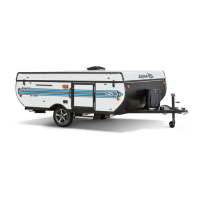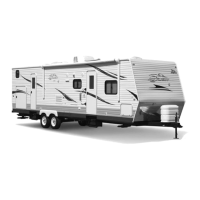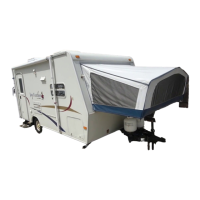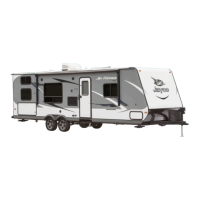CEECKING
FOR
LEAKS
Upon delivery and periodically thereafter, check your gas system for
possibIe leaks. AIthough the entire distribution system and its
attached appliances have undergone factory testing for leaks, with
normal use being subject to road vibrations, connections, and fittings
can develop leaks.
If
you do encounter this odor, turn
off
all open
flames immediately and commence a systematic search for leaks
throughout the gas system. Use a bubble solution or soapy water
-
NEVER
A
MATCH
-
on connections and fittings. Bubbles will appear
at the leaky points. When tightening connections, use two wrenches
with opposing torque to prevent twisting of copper tubing. If the Ieak
doesn't show up in the manifold or copper tubing distribution system,
then check the appliances.
L.P.-GAS
REGULATOR
SEYI'IPJG
Never attempt to reset the gas regulator yourself. Have an
authorized service agency make any regulator adjustments. Even a
little amount of pressure over the recommended setting can cause
damage to appliances
and
regulators. This pressure
setting
must be
performed with
a
gas pressure gauge or monorneter.
Present Codes
&
Standards require the
use
of a "Dua1-stage"
L.P.-gas regulator with an "excess flow"
P.O.L.
adaptor. The
"excess flow" adaptor is built to restrict the flow of escaping
gas
in
the event of a break in the gas supply line.
The "Dual-stage" regulator performs the act of reducing gas
pressure
in
the first stage
10-13
P.S.I.
The second stage then reduces
it to eleven inches of
W.C.
(Water Column).
It
is important to turn your gas bottle valve slowly to eliminate a
chance of a fast rush of gas from the tank. This would possibly
"freeze" the excess flow valve and
shut
off your gas supply. Should
this happen, turn off your gas valve at the tank. Wait about
15
minutes and try again.
WARNING:
Your
veMcIe
has
exterior
combnstion
air
inlets.
Appliance
pilot
lights
shodd
be
tnrned
off
daring
gasoke
or
L.P.-gas
refueling, (Required by law in some states.)
Local regulations sometimes require cylinders be removed
from
the
R.V.
for refilling.
A
relief valve
is
incorporated on all tanks for
safety.
This
valve is normally opened during fillings and will
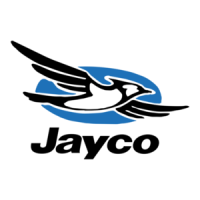
